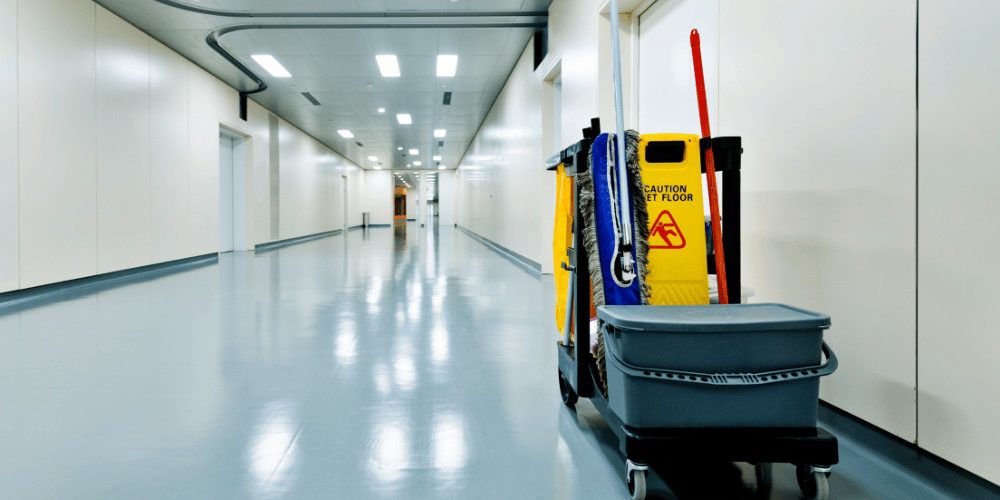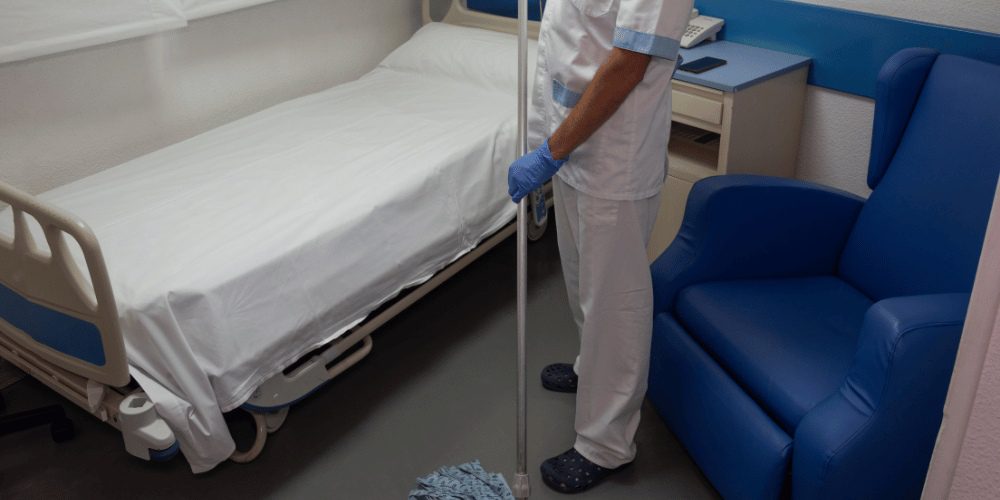Sterilization, infection control as part of medical cleaning services, are of utmost importance in medical facilities or centers. This is due to the high concentration of germs, bacteria and viruses.
Being able to control the high load of microorganisms can prevent the spread of diseases among healthcare personnel and patients visiting the hospital.
Reducing risks in hospitals with thorough cleaning
Methods of eliminating organic and inorganic microorganisms on all surfaces and sanitary equipment must be carried out by applying specialized techniques. All this so that they can guarantee the hygiene and safety of the facilities.
Specifically, hospital centers always have some cleaning and disinfection protocols that help to reduce the possible risks of cross-contamination. Whether they do it themselves (maintenance staff) or hire disinfection service specialists)
This is an objective that hospitals must protect the health of patients and healthcare personnel working there.
Cleaning, disinfection and sterilization: How do they differ?
The terms cleaning, disinfection and sterilization may be confused, but the truth is that they are not the same thing. Therefore, before going deeper into the subject, we will explain in a little more detail what the difference between these terms is.
- Cleaning: in this process, the task of removing and eliminating all dirt and germs that may be present on surfaces and objects in a place is performed. Generally, soap and water are used for cleaning.
- Disinfection: disinfection involves the procedure of eliminating bacteria and viruses present on surfaces and objects using chemicals. This process can be confused with sterilization. But the difference is that disinfection can range from chemical sterilization to the maximum reduction of the number of microorganisms.
- Sterilization: this task consists of the total and absolute elimination of all microbial life forms present on the surfaces of space. This procedure includes the eradication of spores, fungi, bacteria and viruses. At this point there is no longer the slightest presence of microorganisms.
In this sense, cleaning and disinfection are two terms that are closely related, since, to have a good disinfection, it is necessary to have first gone through the cleaning process beforehand. In other words, dirt, dust, grease, food particles, among others, must first be removed before starting the next step.
Cleaning in health centers
A professional commercial cleaning service includes the cleaning and disinfection of hospital surfaces. The aim is to ensure the safety of the users when staying in the facilities.
By having an environment with the lowest possible contamination load, the possibilities of cross-contamination and the spread of diseases are reduced. This type of cleaning can be done through mechanical means, physical means or with the use of chemical substances and is generally carried out by those who offer commercial medical cleaning services.

How are the areas for sterilization and cleaning in hospitals classified?
Companies dedicated to cleaning in medical centers usually classify the areas within said facilities where they will provide medical cleaning services:
Critical areas
This refers to those rooms, wards or services of the health center where patients with serious or chronic diseases are located. They can also be the sectors where invasive procedures are performed, such as:
- Operating rooms
- Blood bank
- Equipment and sterilization center
- Laboratories
- Intensive care unit
- Stretchers, beds, wheelchairs and examination tables
Semi-critical areas
These are rooms where patients may stay for a long time or may be alone for a short period of time. During the time the patient remains in this type of area, he/she may be in contact with all the furniture found there. An example of these areas is:
- Healing rooms
- Patient rooms
- Toilets and toilets
- Storerooms and corridors
Non-critical areas
These are places where people are only passing through, visiting, and do not come into direct contact with the different elements of the hospital center. Non-critical areas can be the following:
- Waiting rooms
- Office areas
- Exterior areas
- Cafeteria or dining room
- Stairs and elevators

What is sterilization in hospitals?
Medical centers are always in charge of creating programs for the prevention of nosocomial infections. This is where sterilization of medical equipment is an important part of these programs.
We can therefore say that sterilization in medical centers is a series of procedures that are specially designed to ensure that all clinical instruments are kept aseptic.
That said, it can be achieved through the methods of cleaning, disinfection and sterilization, in conjunction with good hand hygiene of healthcare personnel.
Which method of sanitary sterilization is most used in hospitals?
There are many sterilization methods, but the most common is the use of autoclaves. This is due to the benefits it brings:
- Fast process: depending on the cycle, it can take about 60 minutes at most.
- It is highly effective: it has a great capacity to penetrate the sanitary material and surfaces.
- Low cost
- Non-toxic
- Easy to monitor
- Highly reliable
- Compatibility with reusable materials: most of them
- Allows multiple applications: in various medical devices, gauze, textiles, surgical instruments, ceramics, glass and rubber objects.
What types of sterilization controls are used in hospitals?
Once the sterilization process has been carried out, it is necessary to go through quality controls, to ensure that the materials are aseptic. The following indicators are used for this purpose:
- Physical: the equipment has the capacity to provide records of the variables because of the procedure, thus checking if the values are correct.
- Chemical: these are colorimetric indicators and consist in the fact that certain metallic salts can change color when exposed to certain temperature conditions or humidity for a certain period. By introducing strips of salts into the sterilization system, the sterilization parameters and their correctness can be checked.
- Biological: in this type of control, attenuated spores belonging to a resistant microorganism are usually placed on support. The support is then introduced into the sterilization system with the material to be sterilized to check whether the spores are still alive or not.
